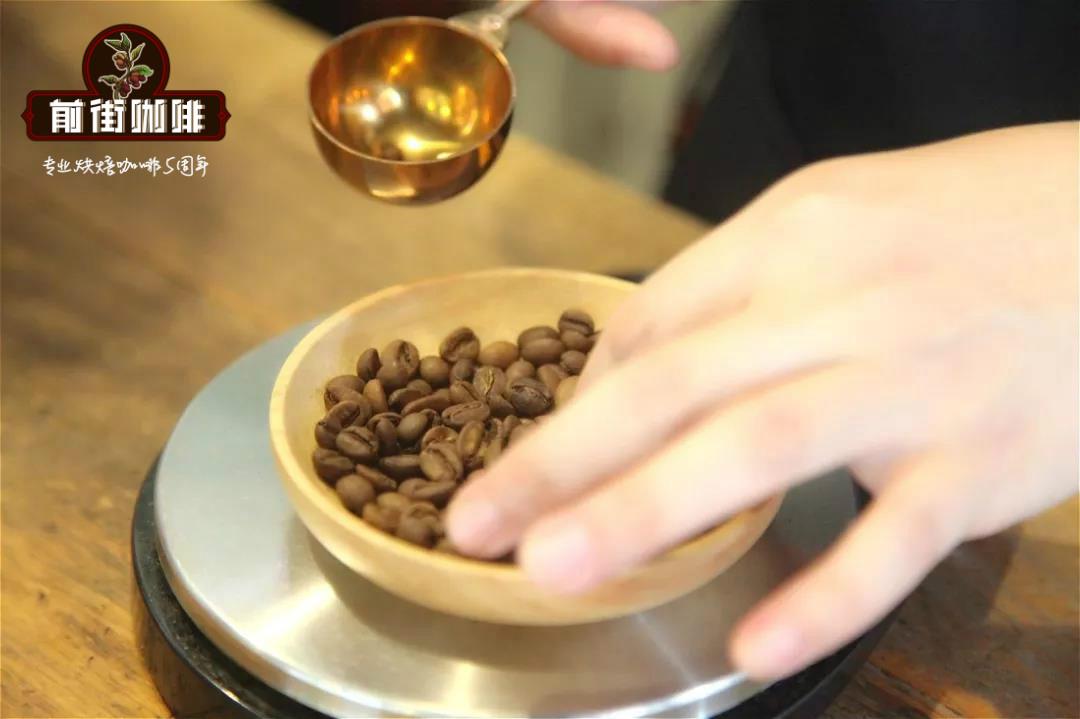Indian-style Malabar coffee has been favored by Europeans since the 17th century.

Professional coffee knowledge exchange more coffee bean information please follow the coffee workshop (Wechat official account cafe_style)
Refined wind-stained coffee on rainy days ~ we'll talk about it later. Let's start with a history of coffee transmission.
Coffee became the number one drink in the world only 1600 years later, so the recorded history of coffee is only 400 years similar to that of Taiwan. It is generally recognized that Africa is the home of coffee. It originated in Ethiopia and spread to all parts of the world from the port of Mocha in Yemen. However, in order to prevent coffee from being grown in other countries, all coffee beans can only be exported after shelling. But Baimi eventually made a mistake, saying that the first person to spread coffee from the Yemen Muslim area was Baba who made a pilgrimage to Mecca around 1600 (in the 17th century). BaBa Budan hid seven germinating coffee beans in his belly and smuggled them back to his home in southwestern India, opening the history of the spread of coffee in the world. And this southwestern India is now the Malaba region (Indian Malaba).
[strong flavor of wheat and tea] India Monsooned Malabar AA | Wind-soaked beans (India Monsooned Malabar AA)
Production area: India Malabar
Raw bean treatment: wind stain treatment
Grade: AA
Flavor introduction
Aroma of wheat and straw, roasted nuts, dried wood, Nanyang spice, greasy and sticky
About Malabar wind-soaked beans
Indian-style Malabar coffee has been favored by Europeans since the 17th century. This kind of wind-stained coffee is a new flavor created inadvertently. In the 17th and 18th centuries, India shipped coffee beans to Europe by sailboat, which took six months. The raw beans were placed on the bottom of the barn, absorbing the moisture and salty taste from the sea surface. The raw beans arrived in Europe and had deteriorated. The color changed from dark green to yellowish brown of rice. The sour taste of coffee almost disappeared, but it unexpectedly developed a strong nutty and shell flavor. It tasted full of tea, with a bit of Xuanmi tea flavor. Nordic people like this kind of golden alternative coffee very much. In 1869, the opening of the Suez Canal, coupled with the advent of steamships, shortened the sailing time from India to Europe. However, customers began to complain that Indian coffee was "stale", lost its charming color and flavor, and orders plummeted, and Indian exporters began to study the solution. It was only then that it was found that the time for coffee beans to be shipped to Europe had been shortened by more than half, and the original flavor had been lost before it was ripe. Some smart people think of the salty and wet environment of the Indian sea from late May to September along the coast of Malabar in southwestern India. After several experiments, it is sure enough to produce a tawny coffee without sour taste similar to that of the past, so it is called monsoon bean, or wind-soaked bean.
Indian coffee is originally thick, low and less sour, while wind-stained coffee beans are made from sun-cured beans. All factories dealing with wind-stained coffee beans face to the west, facing the salty monsoon blowing from the southwest sea. The coffee beans are laid flat in the wind field, the windows are all open, and the wind stains to a certain extent, and then enter the bag, but because the beans will expand a lot in the process, so the coffee beans can not be filled too full, and the coffee bags should not be piled up too dense to avoid mildew and spoilage due to airtight, and from time to time to pour out the coffee beans and replace the sacks. To avoid the breeding of mold is a very time-consuming and labor-consuming project. The weathering period is about 12 to 16 weeks. After ripening, the weevil is treated with tobacco smoke to drive away the weevil. Finally, the beans were screened manually to get rid of the failed beans that did not turn golden. After three to four months of wind treatment, the volume of Malaba raw beans expands by one to two times, resulting in a decrease in weight and density.
Indian style-stained Malabar coffee beans, although the beans are fat, they are soft beans that are strong and dry. Because the coffee beans have been exposed to the moist monsoon for a long time, not only the color of the beans has turned yellow and is known as the golden Malaba, the acidity of the coffee itself has also been greatly reduced, and the taste is very special. Wind-soaked beans are drunk individually, with rich aroma of wheat and tea. For hundreds of years, it has been widely used by European coffee manufacturers to prepare mixed coffee beans, which can increase the consistency and tea feel. Make a good espresso.
END
Important Notice :
前街咖啡 FrontStreet Coffee has moved to new addredd:
FrontStreet Coffee Address: 315,Donghua East Road,GuangZhou
Tel:020 38364473
- Prev

Costa Rican Carnett's raisin treatment, how is it made and what's the flavor?
Professional coffee knowledge exchange more coffee bean information Please pay attention to the coffee workshop (Wechat official account cafe_style) Coffee goes through different stages: coffee fruit (Coffee cherries) with shell beans (Parchment) raw beans (Green been) coffee powder, which corresponds to a series of different processes: picking, wet treatment, dry treatment, baking and grinding methods: 1.
- Next

Indian coffee beans need three to four months of wind soaking, green beans will increase by 2-3 times
Professional coffee knowledge exchange More coffee bean information Please pay attention to coffee workshop (Weixin Official Accounts cafe_style) In fact, India is a country rich in coffee beans. About 250,000 people grow this economic product nationwide. Coffee is suitable for growing in a warm environment. The Tropic of Cancer between North and South is called coffee zone. However, it is afraid that high temperature will damage the characteristics of beans, so most of them are planted in
Related
- Does Rose Summer choose Blue, Green or Red? Detailed explanation of Rose Summer Coffee plots and Classification in Panamanian Jade Manor
- What is the difference between the origin, producing area, processing plant, cooperative and manor of coffee beans?
- How fine does the espresso powder fit? how to grind the espresso?
- Sca coffee roasting degree color card coffee roasting degree 8 roasting color values what do you mean?
- The practice of lattes: how to make lattes at home
- Introduction to Indonesian Fine Coffee beans-- Java Coffee producing area of Indonesian Arabica Coffee
- How much will the flavor of light and medium roasted rose summer be expressed? What baking level is rose summer suitable for?
- Introduction to the characteristics of washing, sun-drying or wet-planing coffee commonly used in Mantenin, Indonesia
- Price characteristics of Arabica Coffee Bean Starbucks introduction to Manning Coffee Bean Taste producing area Variety Manor
- What is the authentic Yega flavor? What are the flavor characteristics of the really excellent Yejasuffi coffee beans?

